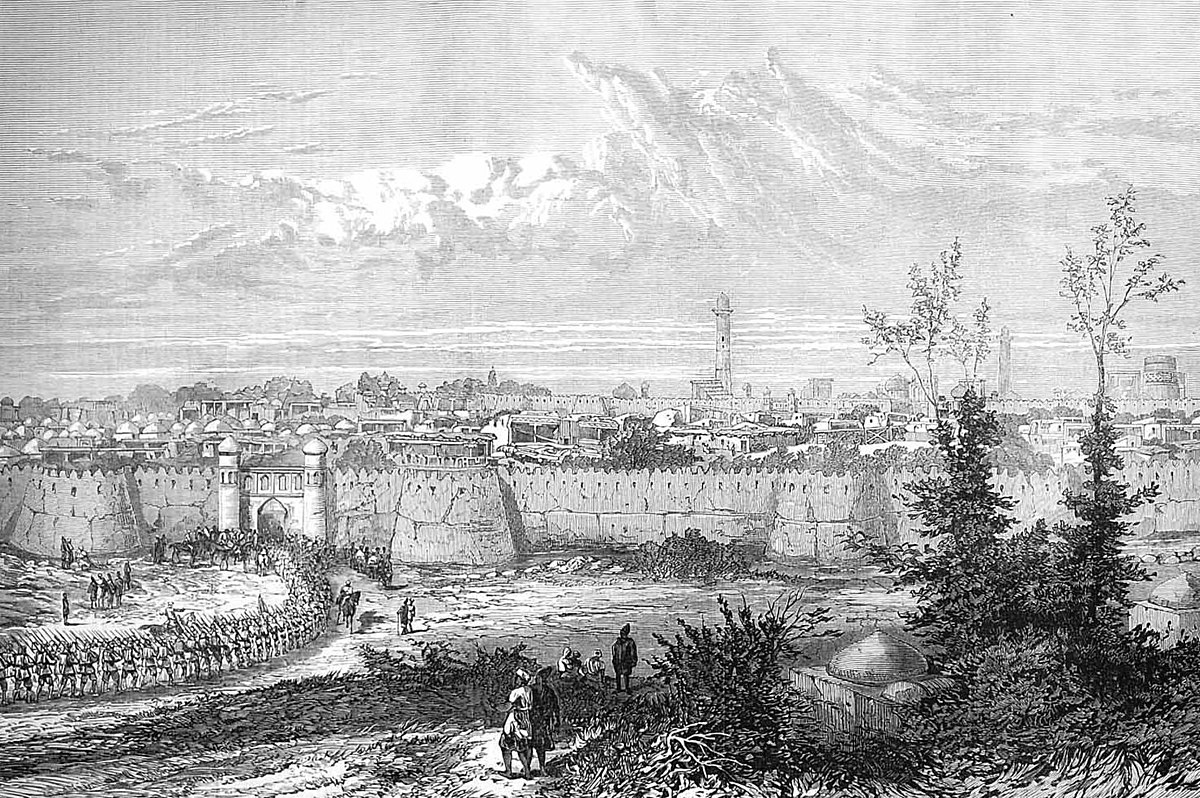
Khivan campaign of 1873
Khiva, UzbekistanTwice before, Russia had failed to subjugate Khiva. In 1717, Prince Bekovitch-Cherkassky marched from the Caspian and fought the Khivan army. The Khivans lulled him by diplomacy, then slaughtered his entire army, leaving almost no survivors. In the Khivan campaign of 1839, Count Perovsky marched south from Orenburg. The unusually cold winter killed most of the Russian camels, forcing them to turn back.
By 1868, the Russian conquest of Turkestan had captured Tashkent and Samarkand, and gained control over the khanates of Kokand in the eastern mountains and Bukhara along the Oxus River. This left a roughly triangular area east of the Caspian, south of the and north of the Persian border. The Khanate of Khiva was at the north end of this triangle.
In December 1872 the Czar made the final decision to attack Khiva. The force would be 61 infantry companies, 26 of Cossack cavalry, 54 guns, 4 mortars and 5 rocket detachments. Khiva would be approached from five directions:
- General von Kaufmann, in supreme command, would march west from Tashkent and meet a second force moving south from
- Fort Aralsk. The two would meet in the middle of the Kyzylkum Desert at Min Bulak and move southwest to the head of the Oxus delta. Meanwhile,
- Veryovkin would go south from Orenburg along the west side of the Aral Sea and meet
- Lomakin coming directly east from the Caspian Sea while
- Markozov would march northeast from Krasnovodsk (later changed to Chikishlyar).
The reason for this odd plan may have been bureaucratic rivalry. The governor of Orenburg had always had primary responsibility for Central Asia. Kaufmann's newly conquered Turkestan Province had many active officers, while the Viceroy of the Caucasus had by far the most troops.
Veryovkin was at the northwest corner of the delta and Kaufmann at the south corner, but it was not until June 4 and 5 that messengers brought them into contact. Veryovkin took command of Lomakin's troops and left Kungard on May 27, taking Khojali (55 miles south) and Mangit (35 miles southeast of that). Because of some firing from the village, Mangit was burned and the inhabitants slaughtered. The Khivans made a number of attempts to stop them. By June 7 he was on the outskirts of Khiva. Two days before he had learned that Kaufmann had crossed the Oxus. On June 9 an advanced party came under heavy fire and found that they had unwittingly reached the North Gate of the city. They took a barricade and called for scaling ladders, but Veryovkin called them back, intending only a bombardment. During the engagement Veryovkin was wounded in the right eye. The bombardment began and an envoy arrived at 4 p.m. offering capitulation. Because firing from the walls did not stop the bombardment was resumed and soon parts of the city were on fire. Bombardment stopped again at 11 p.m. when a message arrived from Kaufmann saying that the Khan had surrendered. The next day some Turkmen began firing from the walls, the artillery opened up and a few lucky shots smashed the gate. Skobelev and 1,000 men rushed through and were near the Khan's place when they learned that Kaufmann was peacefully entering through the West Gate. He pulled back and waited for Kaufmann.
